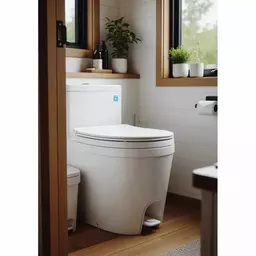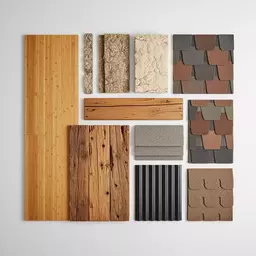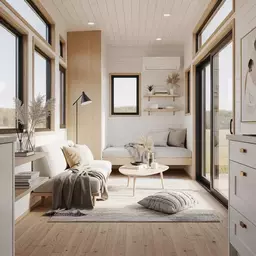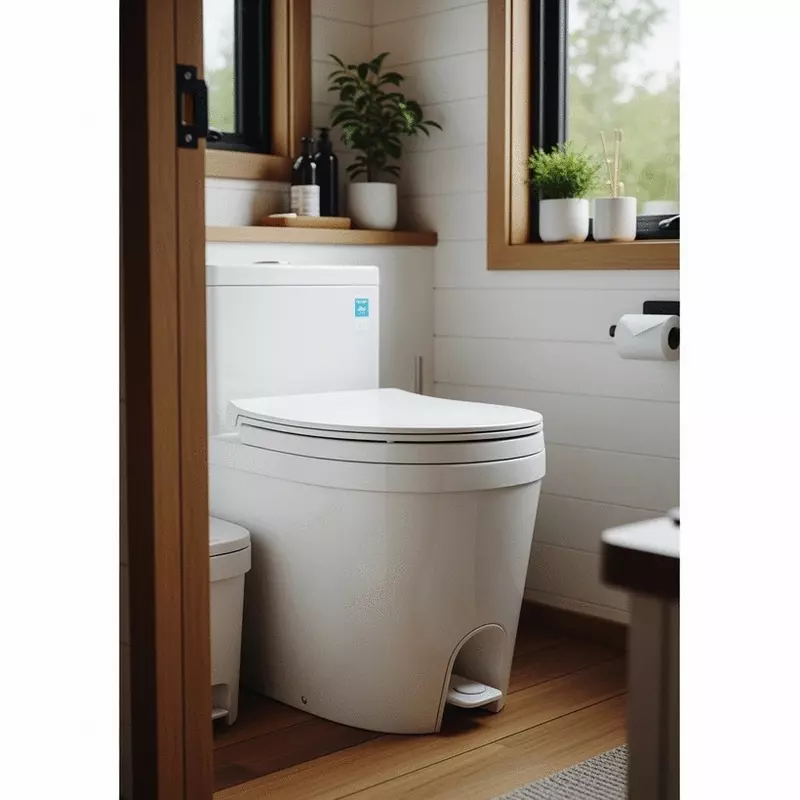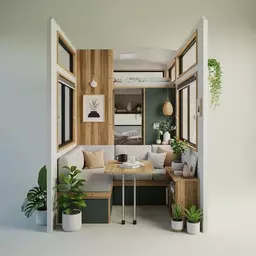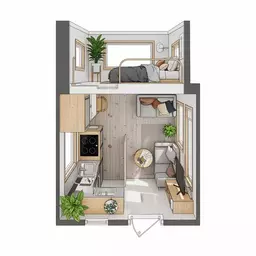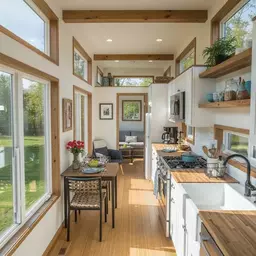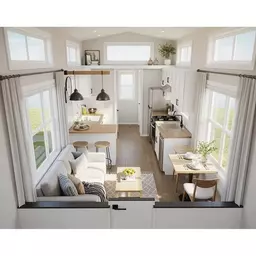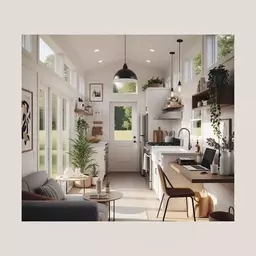Budgeting Your Tiny Home Build
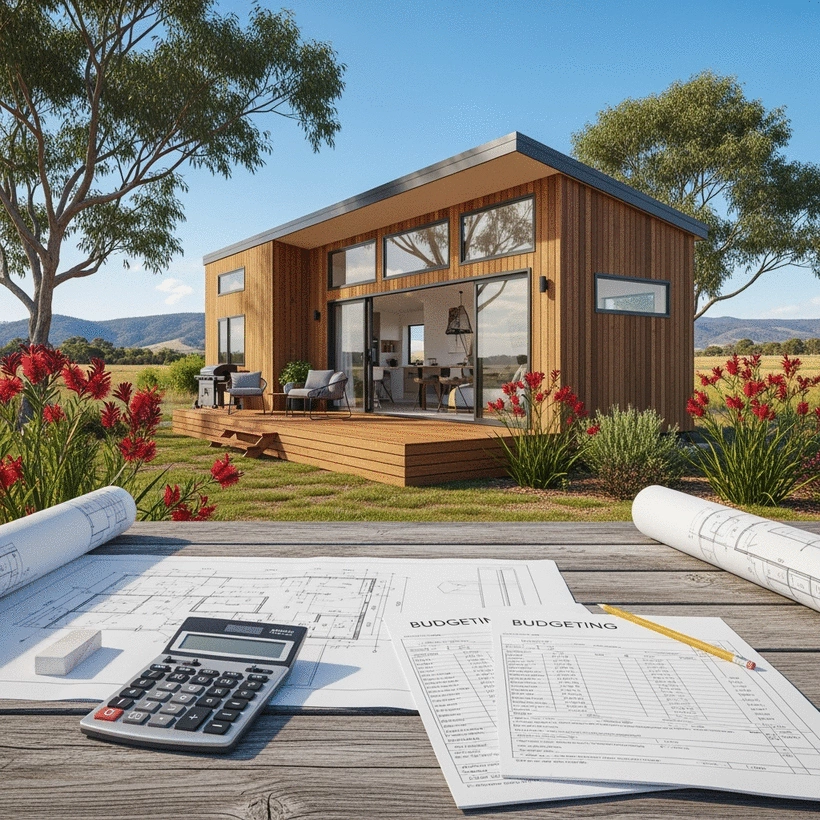
In a world where housing prices continue to soar, the tiny home movement offers a refreshing alternative. As more Australians seek affordable living solutions, this trend is redefining the notion of home and sustainability.
What You Will Learn
- The tiny home movement is a response to rising property prices and the desire for sustainable living.
- Tiny homes typically measure less than 37 square meters and often incorporate innovative designs for space efficiency.
- Sustainable living in tiny homes is encouraged through eco-friendly materials, energy-efficient appliances, and off-grid capabilities.
- Planning your tiny home involves setting clear goals, understanding regulations, and selecting the right location.
The Tiny Home Movement: A Visual Guide
Explore the key aspects driving the tiny home movement in Australia, from the motivations behind adopting this lifestyle to the essential planning steps for your own build.
Definition & ContextWhat is a Tiny Home?
Generally < 37 sq meters (400 sq ft). Can be fixed or mobile (on trailers).
Motivations for Tiny Living
- Rising property prices
- Sustainable living interest
- Desire for simpler lifestyle
Sustainability Aspects
- Eco-friendly materials
- Off-grid living potential
- Reduced carbon footprint
Planning Your BuildStep-by-Step Tiny Home Journey
Set Goals (Sq. Ft, Layout, Needs)
Choose Location (Zoning, Amenities)
Understand Regulations (State, Local)
Secure Permits (Planning, Building)
Understanding the Tiny Home Movement in Australia
In recent years, the tiny home movement has gained immense traction across Australia. Many Australians are feeling the pinch of a housing crisis characterized by soaring property prices and stagnant wages. As a result, the appeal of compact living solutions is becoming increasingly attractive. Tiny homes offer a chance to escape the financial burdens associated with traditional homeownership while promoting a lifestyle focused on minimalism and sustainability.
Moreover, the tiny home trend is not just a response to financial constraints; it's also about redefining what home means. By simplifying their living spaces, Australians can reconnect with nature, reduce their environmental impact, and create a lifestyle that prioritizes experiences over possessions. Are you ready to join this movement and discover the joy of living in a tiny home?
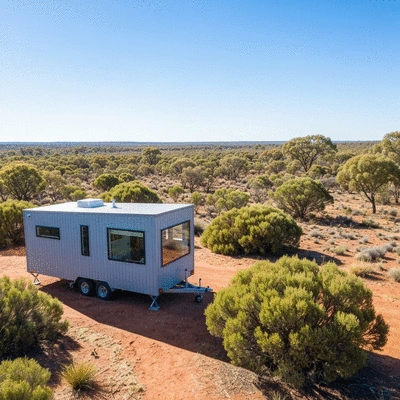
Context of Tiny Homes in Australia
The current housing landscape in Australia is a complex mix of challenges and opportunities. Many urban areas are experiencing a housing shortage, leading to a surge in demand for affordable housing solutions. In light of this, tiny homes emerge as a plausible alternative, enabling individuals and families to achieve homeownership without the hefty price tag typically associated with larger properties.
- Rising property prices making homeownership unattainable for many
- Increased interest in sustainable living and eco-friendly practices
- The desire for a simpler, more affordable lifestyle
As I look at the tiny homes I've seen and designed at Luxe Tiny Homes, it's inspiring to witness how these spaces can transform lives. More Australians are considering tiny homes not just as a trend, but as a long-term solution to the challenges posed by urban living.
What is a Tiny Home?
A tiny home is typically defined as a dwelling that is significantly smaller than a conventional home, usually measuring less than 37 square meters (400 square feet). However, definitions can vary, and some tiny homes can even be built on trailers, allowing for mobility. This flexibility in design and location makes tiny homes a unique choice for many.
Design considerations are crucial when building a tiny home. Space efficiency is key, and most tiny home designs incorporate innovative solutions like:
- Multi-functional furniture that serves multiple purposes, as explored in maximizing space in tiny homes
- Open-concept layouts that create a sense of spaciousness
- Outdoor living spaces that extend the usable area
Whether you opt for a fixed or movable tiny home, understanding these fundamental aspects can help you create a space that feels just right for you!
Exploring Sustainable Living Through Tiny Homes
Tiny homes are not only about reducing space; they're also about embracing a sustainable lifestyle. Living in a smaller space naturally leads to fewer possessions and a more conscious approach to consumption. This shift can have a profound impact on your carbon footprint, making tiny homes a compelling choice for those committed to environmental stewardship.
Here are some ways tiny homes promote sustainability:
- Utilizing eco-friendly materials and energy-efficient appliances, as detailed in eco-friendly materials for tiny homes
- Encouraging a lifestyle that prioritizes experiences over material goods
- Facilitating off-grid living with solar panels and rainwater collection systems
At Luxe Tiny Homes, we believe that every choice we make in our homes can contribute to a healthier planet. By opting for a tiny home, you're not just choosing a compact living space; you're stepping towards a more sustainable, fulfilling lifestyle.
Interactive Poll: Your Tiny Home Aspirations
As you consider the tiny home movement, we want to know: What excites you most about living in a tiny home?
Step-by-Step Guide to Planning Your Tiny Home Build
Embarking on the journey of building a tiny home is an exciting adventure! At Luxe Tiny Homes, we understand the importance of careful planning. This section will guide you through essential steps to ensure you create a space that truly reflects your vision and lifestyle.
First, it’s vital to set clear goals. What do you want to achieve with your tiny home? Are you looking for a cozy retreat, a full-time residence, or a vacation getaway? Understanding your tiny home goals will help you prioritize features that matter most to you.
Setting Your Tiny Home Goals
When planning your tiny home, identifying your specific needs is crucial. This will guide every decision you make during the process. Here are some important goals to consider:
- Determine your ideal square footage and layout.
- Consider the number of occupants and their specific needs.
- Identify essential features, such as storage solutions or outdoor space.
- Think about your lifestyle and how your tiny home can enhance it.
By clearly defining your goals, you can focus on what truly matters, ensuring your tiny home is a *perfect match* for your lifestyle!
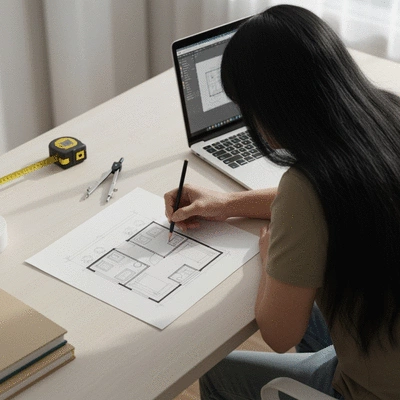
Choosing the Right Location
Location plays a significant role in the success of your tiny home project. There are several factors to consider when selecting the perfect site:
- Research zoning laws and regulations in your desired area.
- Evaluate land availability and affordability.
- Consider the proximity to amenities, such as schools, shops, and nature.
- Think about access to utilities and transportation options.
Finding the right location is essential to enjoy your tiny home experience and build a community around you. Imagine waking up to breathtaking views or having your favorite coffee shop just a stroll away!
Understanding Tiny Home Regulations in Australia
Before you dive into construction, it’s essential to familiarize yourself with the legal requirements for tiny homes in Australia. Each state has its regulations, which may include:
- Building permits and inspection requirements, which can vary by state; for more details, refer to Australian tiny home building rules.
- Compliance with local council regulations.
- Guidelines for waste management and environmental impact.
- Road access if your home is movable.
By understanding these regulations early on, you can avoid potential setbacks and make your tiny home journey smoother! Stay informed and keep track of any changing laws that may affect your build.
Essential Building Permits and Regulations to Consider
Now that you have an understanding of the overall regulations, let’s look at the specific building permits you may need:
- Planning permits to establish the land use.
- Building permits to ensure construction meets safety standards.
- Other specific permits related to utilities and environmental impact.
Each of these permits is a critical step in the process! Ensuring you have the right documentation will not only keep your project compliant but also provide peace of mind as you build your dream tiny home.
Frequently Asked Questions About Tiny Homes in Australia
What is considered a "tiny home" in Australia?
Generally, a tiny home in Australia is a dwelling less than 37 square meters (400 square feet). They can be either fixed or mobile (built on trailers).
Why are tiny homes becoming popular in Australia?
Tiny homes appeal to many Australians due to soaring property prices, a desire for financial freedom, interest in sustainable living, and a preference for a simpler, minimalist lifestyle.
How do tiny homes contribute to sustainable living?
Tiny homes promote sustainability through the use of eco-friendly materials, energy-efficient appliances, reduced consumption, and the potential for off-grid living using solar panels and rainwater collection.
What are the initial steps to planning a tiny home build?
Initial steps include setting clear goals for your tiny home (e.g., size, layout, purpose), choosing a suitable location considering zoning and amenities, and understanding local and state regulations.
Are there specific regulations for tiny homes in Australia?
Yes, regulations vary by state and local council. They can include requirements for building permits, compliance with local council rules, waste management guidelines, and road access rules for mobile tiny homes. It's crucial to research these before building.
By following these steps and carefully planning your tiny home build, you’ll be well on your way to realizing your vision of sustainable living! At Luxe Tiny Homes, we're here to support you every step of the way as you embark on this exciting journey.
Recap of Key Points
Here is a quick recap of the important points discussed in the article:
- The tiny home movement in Australia addresses the housing crisis by offering affordable and sustainable living options.
- Tiny homes promote a minimalist lifestyle, encouraging individuals to prioritize experiences over possessions.
- Key design considerations include space efficiency, multi-functional furniture, and incorporating outdoor living areas.
- Sustainable living is a core principle of tiny homes, utilizing eco-friendly materials and energy-efficient appliances.
- Careful planning is crucial, including setting clear goals, choosing the right location, and understanding local regulations.
- Complying with building permits and regulations is essential for a smooth construction process.
